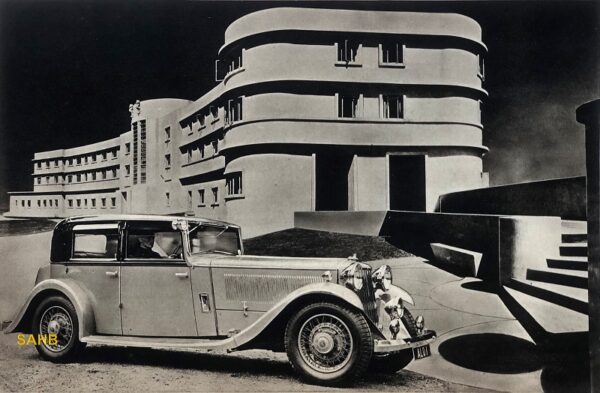
The story of this elegant ‘gentleman’s carriage’ dates to the origins of the Armstrong Siddeley company in 1919. Its first model was the imposing 5-litre 30 HP, which remained the flagship of the company throughout its long run from 1919 to 1932; a total of 2,270 were made.
The 30 HP was powered by a 4,966cc six-cylinder engine (3.5in x 5.25in bore and stroke) with some suitably advanced technical aspects: two detachable cylinder heads (later a single detachable head), large inclined overhead valves and valve gear completely enclosed and automatically lubricated.
The successor to the 30 HP would have to be equally impressive – and Armstrong Siddeley did not disappoint. The Siddeley Special was launched at the 1932 Olympia Show; it continued to use a large six-cylinder engine with the same capacity and bore and stroke, and overhead valves, but the most remarkable aspect of the new engine was its use of the newly developed Hiduminium alloy for its crankcase, cylinder block and pistons.
The Hiduminium or R.R. alloys are a series of high-strength, high-temperature aluminium alloys, developed for aircraft use before World War II in a collaboration between Rolls-Royce and the Siddeley subsidiary High Duty Alloys Ltd. The name Hi-Du-Minium is derived from that of High Duty Aluminium Alloys.
Hiduminium was used to overcome problems of reliability encountered by Rolls-Royce in its V12 engines for the Schneider Trophy racing seaplanes. The crankcase and cylinder block used R.R.50 and the pistons R.R.53, and the resultant engine became the Rolls-Royce ‘R’, the ‘R’ standing for’ Racing’. Armstrong Siddeley used the same combination of R.R.50 and R.R.53 for the engine of the Siddeley Special.
The other important change from the venerable 30 HP to the Special was the use of a Wilson pre-selector gearbox that Walter Gordon Wilson had developed after World War I. Vauxhall bought the patent rights, but then its new owners General Motors shelved Wilson’s design, wanting instead to promote their synchromesh system. Wilson contacted John Siddeley to help get his patents back. Siddeley duly did so in a deal with GM, and Armstrong Siddeley first used a Wilson pre-selector box in their 1928 12 HP.
The owner of the Siddeley Special in our Snapshot was Sir Malcolm Campbell. It is not surprising that he chose this car, since Reid Railton, then at Thompson and Taylor at Brooklands, decided to use the Hiduminium Rolls-Royce ‘R’ engine in Campbell’s updated ‘Bluebird’ that broke the Land Speed record twice in 1935, finally reaching over 300mph.
Only 253 Siddeley Specials were built between 1933 and 1937 – possibly because the alloy was needed for the war effort. Malcolm Campbell’s car shown here is a Sports Tourer with a 4-light Burlington body. It is shown in front of a suitably modern building: the newly built Midland Hotel in Morecambe, completed in the Streamline style in 1933 by the London, Midland and Scottish Railway (LMS) to the designs of architect Oliver Hill, with sculpture by Eric Gill.
Image courtesy of The Richard Roberts Archive: www.richardrobertsarchive.org.uk







Leave a Comment